Warning: This interview with Polyarc Games on Glassbreakers: Champions of Moss contains minor spoilers for Moss: Book II.
The next step for the award-winning VR adventure series Moss is a multiplayer real-time strategy game. Glassbreakers: Champions of Moss was announced back in August, and went into early access on the Meta Quest store shortly afterwards.
In Moss (2018) and Moss: Book II (2022), you play as a Reader, who discovers a magical book that allows you to see and affect events in the life of Quill, a young mouse on a quest to rescue her uncle. In Glassbreakers, your Reader is now the “quarterback” of a 3-person team of champions from all over the world of Moss. Your goal is to destroy your opponent’s magical Glass while protecting your own. Glassbreakers is Polyarc’s first run at a live-service game, and one of the first live-service games in virtual reality. Players can earn currency by winning (or losing; the game tries to respect your time) matches. That currency can then be spent on customization options like tints, banners, and a new mask for your Reader.
I visited Polyarc Games’ office in Seattle to play and discuss Glassbreakers with Polyarc design director Christopher Bourassa and publishing director Lincoln Davis. Before I tried out a round of Glassbreakers with Bourassa, we discussed the world of Moss, Polyarc’s move into live-service, and the evolving state of VR that made Polyarc think now was the right time for this sort of move.
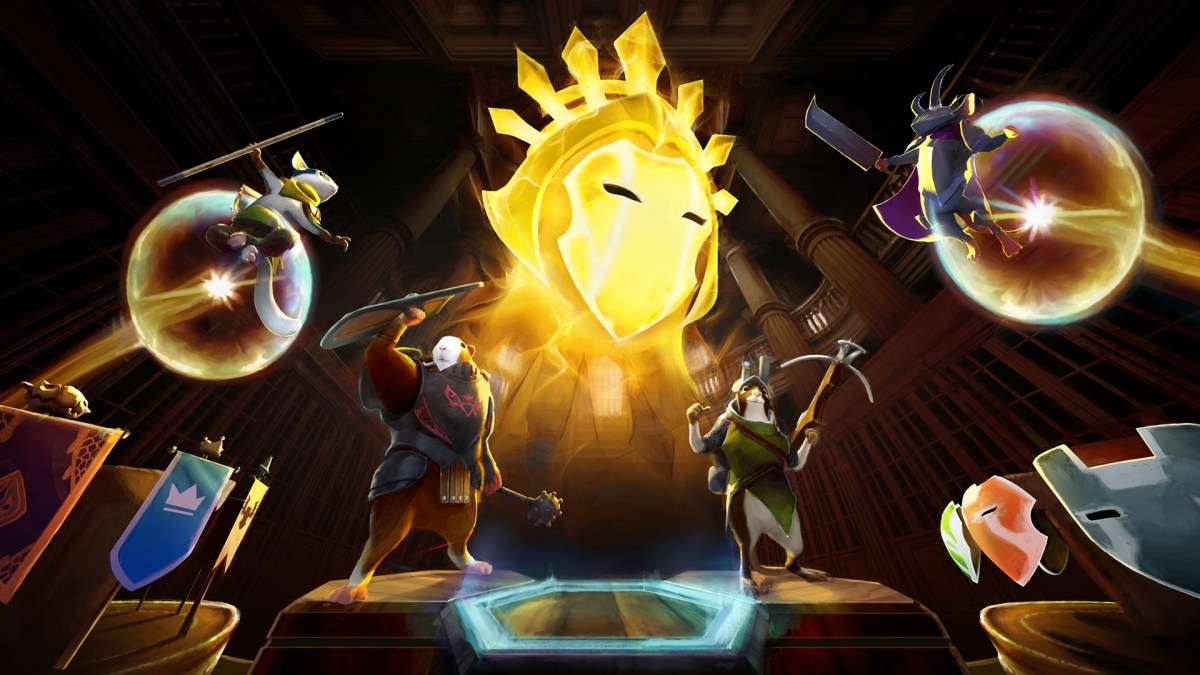
Concept art by Polyarc Games
Can you talk about going from Moss: Book II, which was a 3D, single-player adventure game, to this combination of checkers and Dota? It doesn’t seem like a straight line.
Christopher Bourassa: This was actually the first prototype that we made. If you go seven years back when Polyarc was getting started, we were putting together some demos. Glassbreakers, then known as Crimson, really came out of everybody’s love of G.I. Joe action figures. Transformers fighting each other, right? Playing with your toys. Because VR as a medium is very tactile, and our action figures can do cooler stuff, so we all want to play with them again.
So we put together a demo of Crimson. Back then, it was turn-based, and very different from where it ended up, but the idea was the same. We made that demo, and we were looking for funding at the time, so we were rapidly doing all sorts of prototypes, including one for Moss.
When we evaluated them, we looked at the VR market at the time, and a multiplayer competitive game—you’d need headsets in the wild, a population. It didn’t seem like Crimson’s, Glassbreakers’, time. We put it in the back pocket, and always knew we wanted to get back to it.
Then Moss was a big success, and everyone seemed really into Twilight Garden [DLC for Moss]. We did a check-in of where the headset market was, and started shaping what we wanted Glassbreakers to be while we were working on Moss: Book II.
We’re seeing competitive games like Echo VR, Blaston, Population One. We’re starting to see VR games that are sustaining player bases like live-service-style games. Now we’ve gone into full development on Glassbreakers.
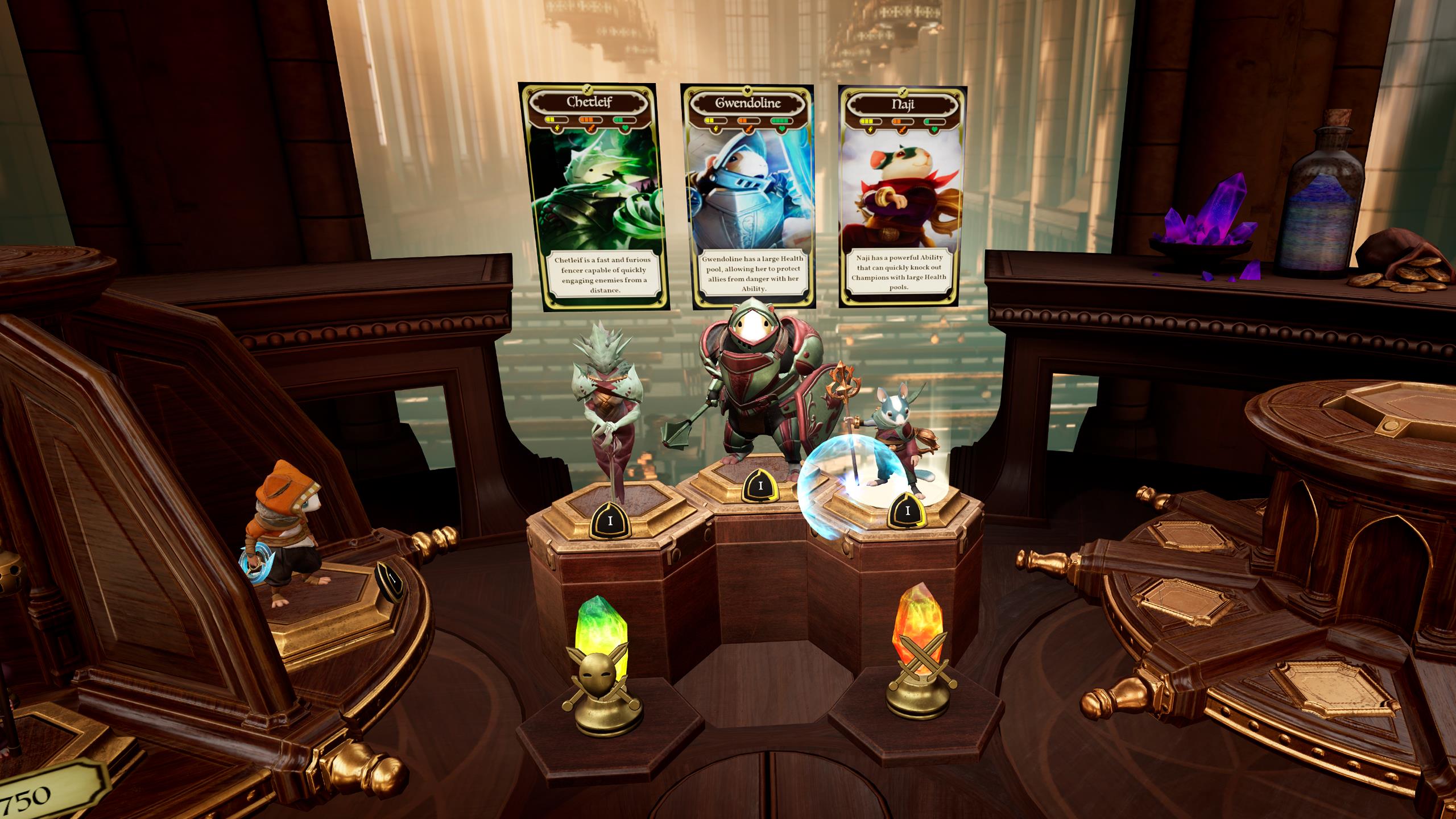
Screenshot by Polyarc Games
Lincoln Davis: This is our first foray into live-service gaming, and you’re seeing that more and more in the VR market. With Moss and Moss: Book II, those are games where you do support as needed with bug fixes, but as players demand more from their game and experience, there’s a desire to come back to games more often and experience unique content.
We thought this was the right time for that, and to create a live-service community. We want that feedback. We’re live on our Discord, we’re communicating with our audience. We’re definitely in a space where that player feedback helps create and shape the game and where it’s going.
That’s helped us realize that this is the time to do this, which goes back to what Chris was saying, as we changed from a turn-based strategy game to real-time. That fluidity of action and movement, not having to wait and pause… it just flowed well with the evolution of the game and the storyline.
[to Bourassa] I don’t know if you want to talk about where the game starts.
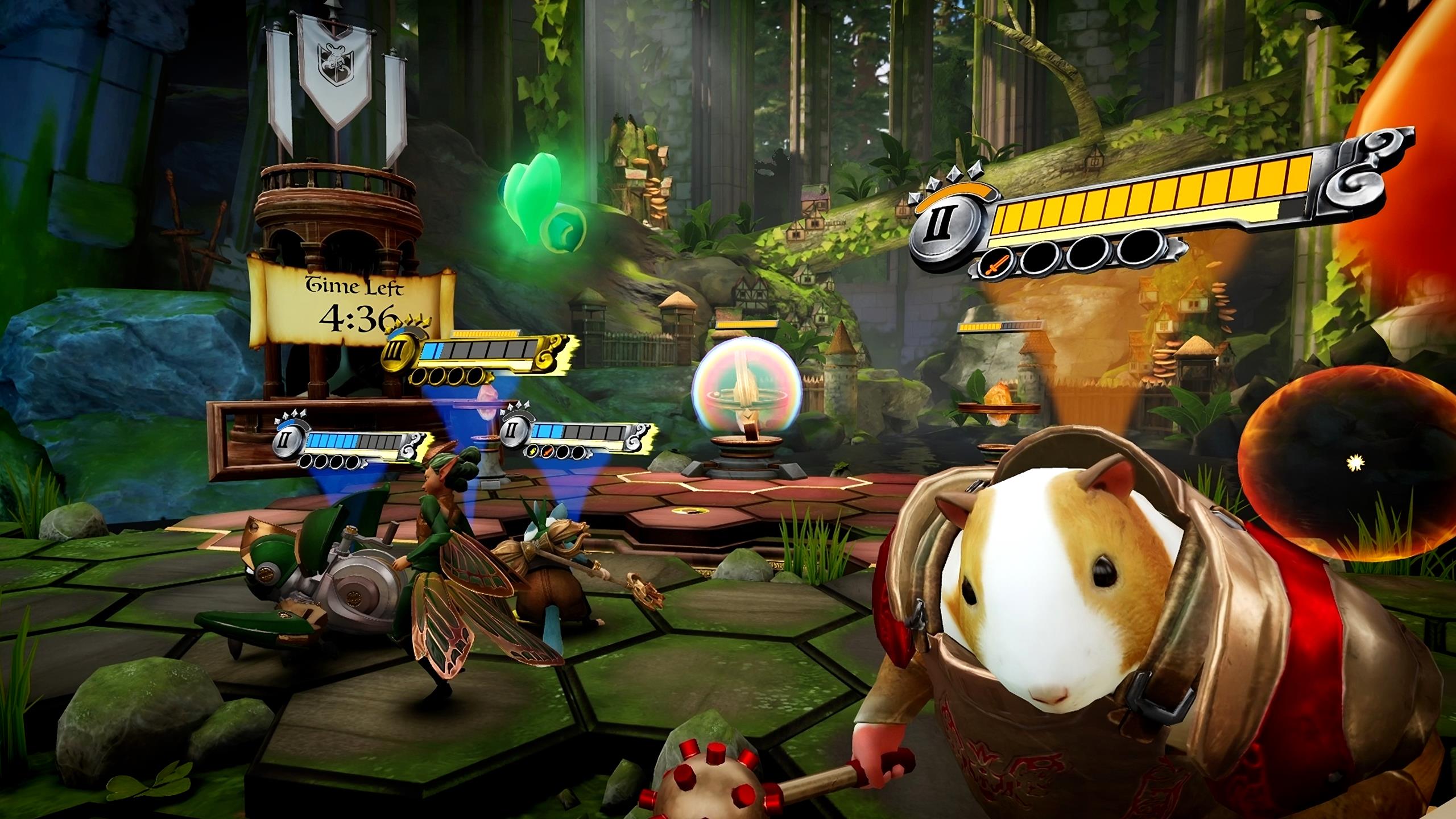
Screenshot by Polyarc Games
I have to admit, I was assuming it didn’t have a storyline. A lot of games like this don’t.
Bourassa: It does and doesn’t, in the same way as League of Legends when it started out. It’s a loose narrative. While [Glassbreakers] doesn’t feed it to you, especially in such a way as Moss, where you’re literally flipping the pages as the story progresses, Glassbreakers takes place after the events of Moss: Book II. Canonically, we are still in the world of Moss, and everything that happened in Book II is still here.
In Glassbreakers, you are inside the attic of the library where Moss is set. You can see where you were in Book II, and get introduced to the librarian. She lets you know that there’s more going on in the world of Moss, and that all you did in Moss was read Quill’s story. There are other people, creatures, and champions in this world that all have stories.
This is our way to give you a glimpse of other characters’ stories. We have all these stories that we want to tell, and the idea is that they’ll all going to interconnect. …We have the ability to start filling out the universe through the backstories of these characters.
Davis: We almost take it as a Marvel comparison, with the Avengers. They come in and connect as needed. There are other teasers and remnants of Glassbreakers’ champions in Moss. You met the sprites in Book II, and we have a sprite champion. We have all these things that we’ve been alluding to in Moss, knowing we wanted to go in this direction.
Bourassa: What will be interesting is in the eventual Book III, if it happens, if you’ve now played Glassbreakers, you’ll start seeing characters you know from that in Moss. It’s similar to how Legends of Runeterra started adding champions that League of Legends didn’t have, and now the characters from the card game are actually League champions. We’ll have that little back-and-forth.
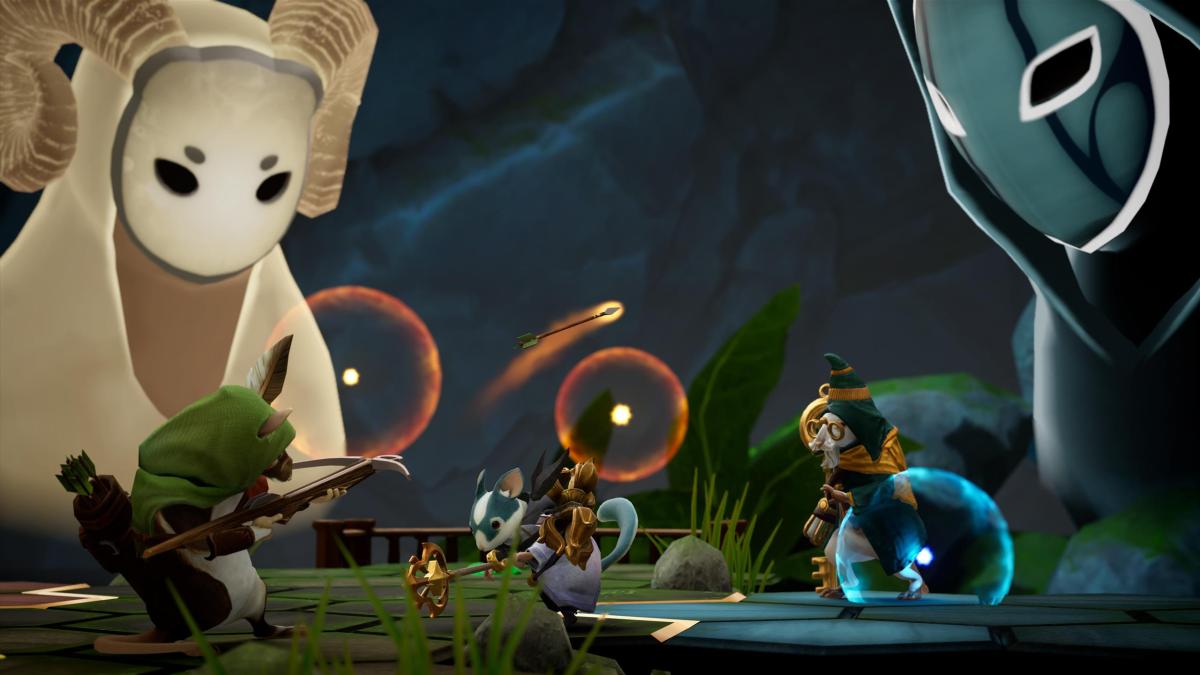
Screenshot by Polyarc Games
One of the impressions I got from Moss was that this was a world in decline. You were creeping your way through a lot of this area’s past glories. Like how at the end of Moss, you end up wrecking most of the castle.
Bourassa: Yeah. [chuckles] Things don’t go so great.
I assumed that Quill and her village, the Clearing, were most of what was left of Moss. I’m surprised to hear that there are more stories to tell.
Bourassa: It’s a great point. The Clearing and the Cinder Knight, that is the focal point of what’s happening. All the other pieces of Glass that Tylan [the antagonist in Moss: Book II] is after all came from other places.
In Book II, you only really see Tylan coming to get the King’s Glass, which is the last one he needs. All of the other pieces of Glass existed in other places in the world, so you can imagine us being able to visit those other places and meet those characters that Tylan ran through to get all the things that he needed.
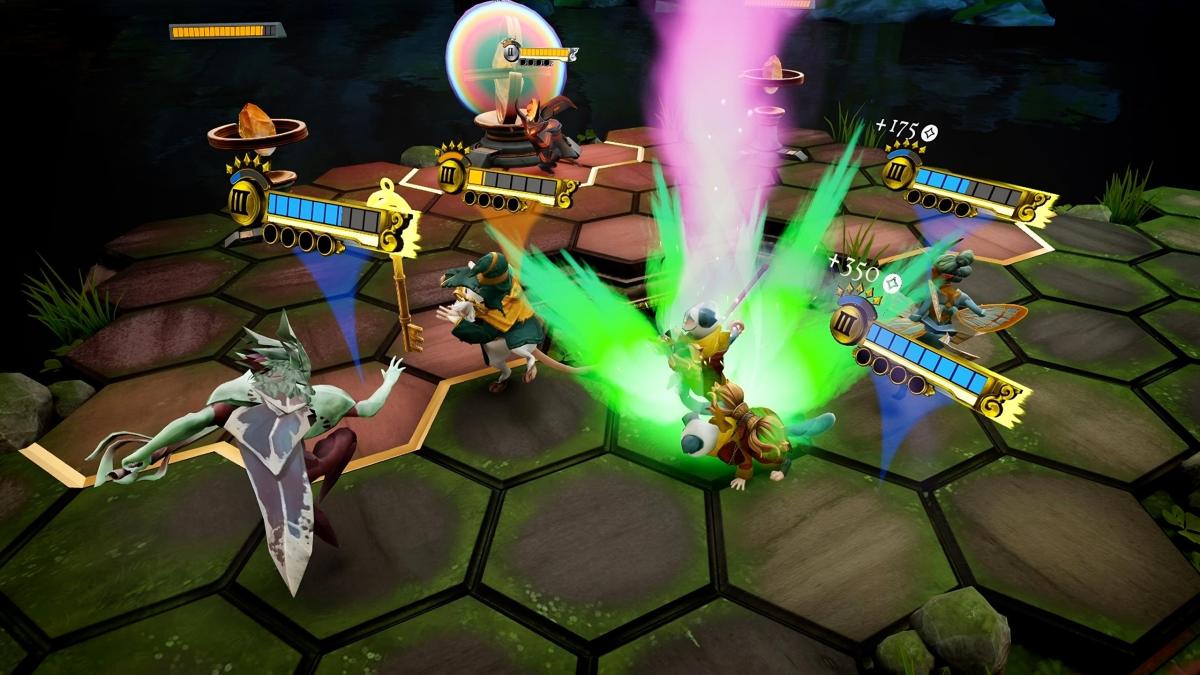
Screenshot by Polyarc Games
Glass was such a big motivating factor in the Moss games, and now you as the Reader have a piece. That seems like it could be a big deal.
Bourassa: With the name of the game being Glassbreakers, and Glass was the thing that everybody was chasing in Moss, that was the fun tie-in that we wanted to do. Since Glass is so precious, we decided to make that your “towers,” like in League of Legends or Clash Royale. It just felt like a loose, fun tie-in. Glass is precious. Defend your precious thing.
I was wondering if your champions were from different ages of Moss, or if they were all from the same general point on the timeline.
Bourassa: Right now they are, but there’s nothing that says we need to keep that the case. We have no characters who are from the past or future-facing, so we can assume all these characters are from post-Book II.
But we’ve talked about potentially bringing Argus back. We know he’s dead, but a lot of people want to play as Argus. People have asked about that already. Why wouldn’t we bring him back? Why don’t we bring back a necro-version of Argus? There’s options there, but I don’t think we’re going to box ourselves in.
This interview has been edited for clarity.

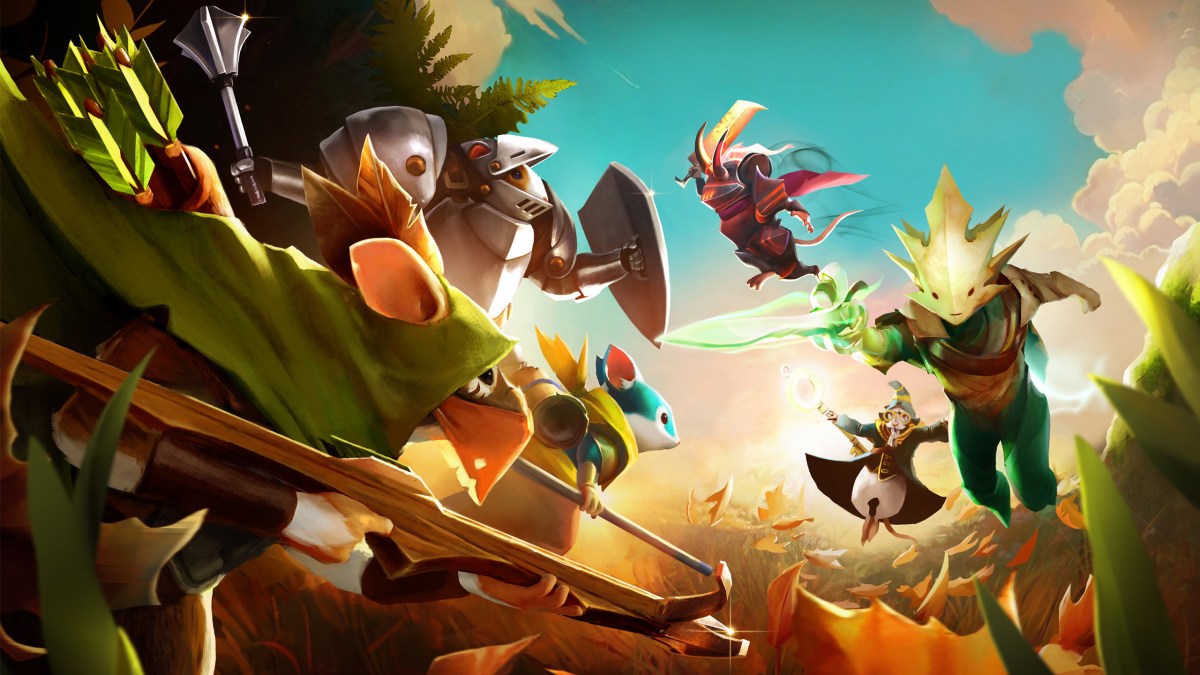
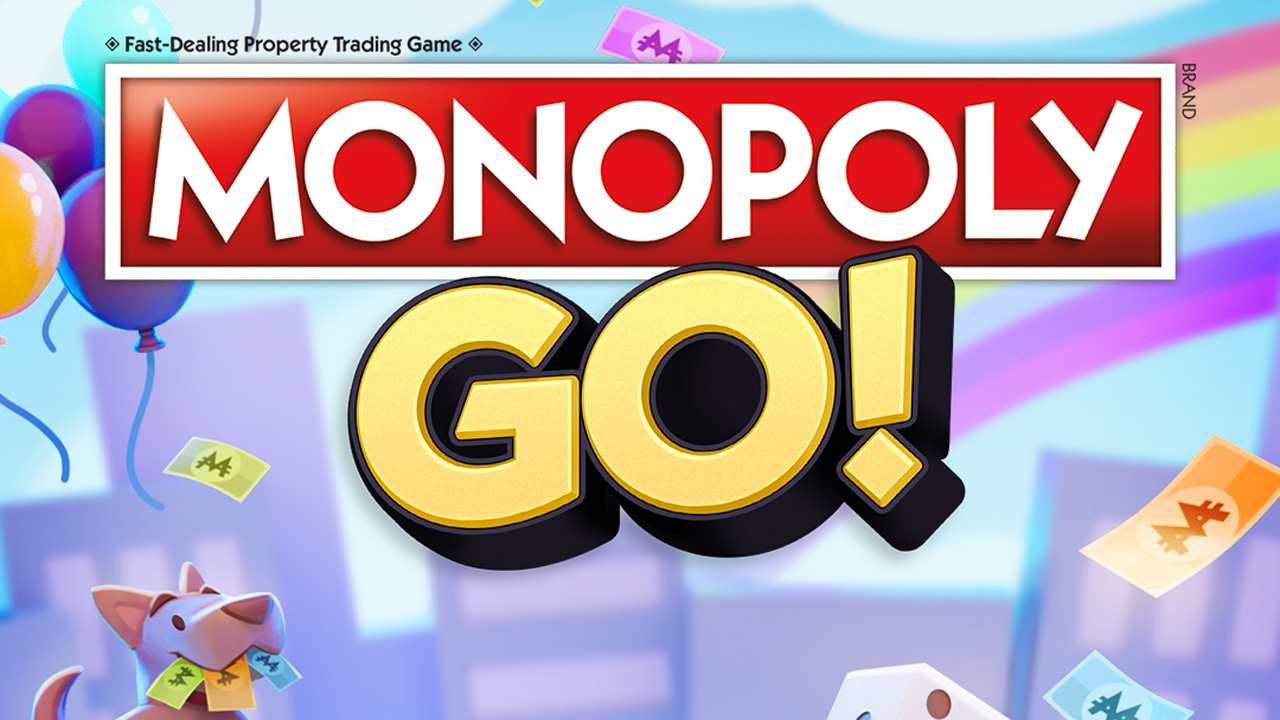



Published: Oct 5, 2023 05:00 pm